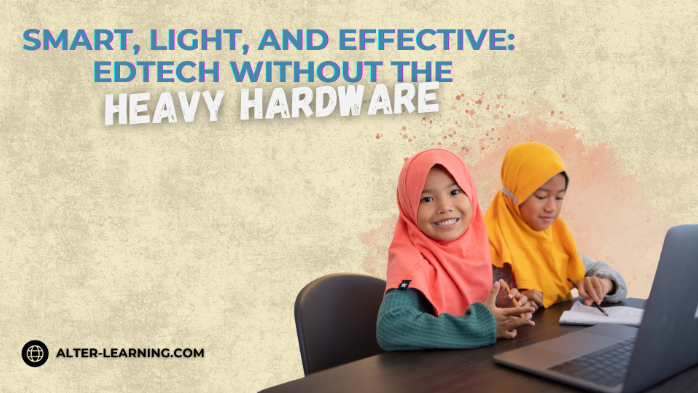As digital learning becomes more widespread, not all classrooms or households are equipped with the latest hardware. Educational equity often hinges not just on access to content, but access to the tools needed to run it.
While many immersive learning experiences are associated with expensive headsets and high-end computers, there are platforms designed to offer interactive, meaningful education using more modest setups. Alter-Learning is one such example — an approach that suggests educational technology can be both effective and accessible.
Supporting Learning on the Devices Schools Already Have
Not every classroom has the capacity for a full VR setup, and not every home can accommodate large downloads or high-spec machines. Educational tools that run smoothly on standard desktops or mobile devices can play a vital role in helping more students benefit from digital innovation. By designing with scalability and device compatibility in mind, platforms can reduce the barrier to entry for schools and families alike.
Some common accessibility-focused features include:
- Web-based and desktop applications that require minimal hardware,
- Mobile-friendly versions that support remote or on-the-go learning,
- Games with low memory and storage demand that can run on shared or older devices.
These features can help ensure that immersive educational tools are not limited to the best-resourced environments but are instead adaptable to a wider variety of learning contexts.
Prioritizing Substance Over Complexity
Educational platforms that focus on conceptual depth, rather than graphic intensity or technical complexity, can still deliver engaging, standards-aligned content. By emphasizing curriculum-based design, interactive problem-solving, and cross-disciplinary learning, these experiences can support meaningful learning even without flashy visuals or large file sizes.
For example, students can:
- Strengthen math fluency through interactive logic puzzles,
- Explore life sciences through structured, observation-based simulations,
- Practice early literacy through phonics and pattern-recognition activities,
- Build engineering thinking with physics-based challenges that encourage trial and error.
The simplicity of the tech does not limit the potential of the learning. In fact, lighter applications can often reduce distractions, helping learners focus more on the tasks, challenges, and ideas presented.
Adapting to a Range of Learning Environments
One of the strengths of low-tech-demanding educational tools is their ability to fit seamlessly into a variety of teaching settings. Whether a school is working in-person, remotely, or in a hybrid model, flexible platforms can provide continuity and support differentiated instruction.
Teachers may use these tools to:
- Supplement existing curriculum with interactive content,
- Provide individualized practice or remediation without needing additional hardware,
- Support group projects in shared-device classrooms or computer labs.
The ability to scale access without sacrificing educational quality is crucial in ensuring that digital learning isn’t just available to a few, but possible for many.
Encouraging Broader Participation in Digital Learning
Educational innovation is most impactful when it reaches the students who need it most. Platforms that are mindful of technical requirements can support participation from students in under-resourced schools, rural areas, or low-connectivity environments. They can also offer a more consistent experience for families who may not have the latest devices at home.
By focusing on smart design rather than high-end tech, these platforms may:
- Reduce the digital divide in educational outcomes,
- Encourage adoption by districts with varied infrastructure,
- Offer more equitable access to STEAM learning opportunities.
Accessibility isn’t just a technical feature — it’s a pedagogical value. Platforms that combine solid educational design with modest technical demands suggest that learning doesn’t have to be out of reach. With the right tools, students can engage, explore, and grow — even without cutting-edge hardware.
In a world where technology often moves faster than school budgets can keep up, designing educational tools that work with what learners already have can make a real difference. Platforms that prioritize flexibility and access can help broaden participation in immersive education — making interactive, student-centered learning a possibility for more classrooms, families, and futures.
Follow Alter-Learning for more insights into immersive education, edtech success stories, and the future of learning. Want to explore how VR/AR could transform your school or learning platform? Let’s connect.



